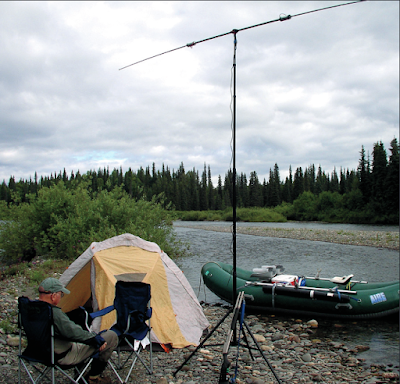Communications Groups
Founded in 2011, AmRRON (https://amrron.com/) was originally created as a communications network to keep communities and states within the American Redoubt connected in the event of a major disaster situation, or socio-economic collapse. Within a year, over half the members consisted of those living outside the American Redoubt. AmRRON has now grown to nearly four thousand radio operators, with members in every state, plus Puerto Rico and Canada. AmRRON is a network of Preppers, Patriots and Redoubters who have volunteered to keep each other connected when other means of communications are unavailable or unreliable. AmRRON operators participate in scheduled nets to practice using non-conventional communications.
The Amateur Radio Emergency Service® (ARES) (http://arrl.org/ares) consists of licensed amateurs who have voluntarily registered their qualifications and equipment, with their local ARES leadership, for communications duty in the public service when disaster strikes. Because ARES is an Amateur Radio program, only licensed radio amateurs are eligible for membership. The possession of emergency-powered equipment is desirable, but is not a requirement for membership.
What exactly does Comms Connect Us (CCUS) do? - Should a CCUS (https://commsconnectus.com/) member need assistance while traveling or during a natural/manmade disaster, we do our utmost to identify nearby available assets/resources, which are willing/able to assist. We then coordinate the response of that assistance, and remain in constant private communication with both throughout the incident.
REACT (https://reactintl.org/) is a not-for-profit volunteer organization, with local teams (chapters) in the USA, Canada, and other countries. Members provide 2-way radio communications for their community in times of emergency or public service needs. We utilize 2-way radios, such as Amateur Radio, CB Radio, GMRS Radio, FRS Radio & commercial radios.Cyberteck (Sparks31) (https://cybertekzine.com/) The urban and suburban environments are where most of us work and live, and present their own unique challenges to communications monitoring and SIGINT. They are also the most likely place to be if an unforseen event occurs. In person classes are offered by this group.
In a previous post, Communications for Survivalists, (https://cascadiasurvivalist.blogspot.com/2022/02/communications-for-survivalists.html) we provided a list of resources that you can download to support your communications planning.
Cascadia Survivalist recommends that every family and every preparedness group build a communication plan and conduct training to ensure that you will be able to communicate in the event of a failure of cellular networks and access to the Internet. Notes from Our Emergency Communication Exercise can be found here (https://cascadiasurvivalist.blogspot.com/2022/04/notes-from-our-emergency-communication.html).
An example of a communications group run by a small town is the Medina Emergency Radio Response Team (MERRT) (https://www.medina-wa.gov/eps/page/medina-emergency-radio-response-team-merrt)
The city of Medina, WA provides radios to community members and holds a weekly radio net to support emergency preparedness for Medina residents. In a disaster, long-term power outage, or other emergency the city Emergency Preparedness office has an established, and well trained, network of citizens who can provide real-time information about events in their immediate area and receive direct responses from the city.
On Sunday nights, the Medina Emergency Radio Response Team has a weekly radio exercise at 7:00 PM, using city-issued public service radios on channel 1.
Medina citizens, public officials and city staff holding public service radios are encouraged to check in. This test ensures the equipment is operational and is an opportunity to practice the most efficient communication format for use in an actual emergency.
Immediately following the exercise, at approximately 7:05 - 7:15 PM, the Medina Amateur Radio Emergency Net (MAREN), open to all licensed amateur radio operators, convenes on tactical frequency 146.560 (simplex).
Is there a similar group in your city or county?






.png)


Comments
Post a Comment